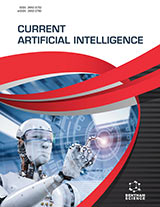Abstract
Aims: Different chaotic APSO-based algorithms are developed to deal with high non-linear optimization problems. Then, considering the difficulty of the problem, an adaptation of these algorithms is presented to enhance the algorithm.
Background: Particle swarm optimization (PSO) is a population-based stochastic optimization technique suitable for global optimization with no need for direct evaluation of gradients. The method mimics the social behavior of flocks of birds and swarms of insects and satisfies the five axioms of swarm intelligence, namely proximity, quality, diverse response, stability, and adaptability. There are some advantages to using the PSO consisting of easy implementation and a smaller number of parameters to be adjusted; however, it is known that the original PSO had difficulties in controlling the balance between exploration and exploitation. In order to improve this character of the PSO, recently, an improved PSO algorithm, called the accelerated PSO (APSO), was proposed, and preliminary studies show that the APSO can perform superiorly.
Objective: This paper presents several chaos-enhanced accelerated particle swarm optimization methods for high non-linear optimization problems.
Methods: Some modifications to the APSO-based algorithms are performed to enhance their performance. Then, the algorithms are employed to find the optimal parameters of the various types of hysteretic Bouc-Wen models. The problems are solved by the standard PSO, APSO, different CAPSO, and adaptive CAPSO, and the results provide the most useful method. The sub-optimization mechanism is added to these methods to enhance the performance of the algorithm.
Results: Seven different chaotic maps have been investigated to tune the main parameter of the APSO. The main advantage of the CAPSO is that there is a fewer number of parameters compared with other PSO variants. In CAPSO, there is only one parameter to be tuned using chaos theory.
Conclusion: To adapt the new algorithm for susceptible parameter identification algorithm, two series of Bouc-Wen model parameters containing standard and modified Bouc-Wen models are used. Performances are assessed on the basis of the best fitness values and the statistical results of the new approaches from 20 runs with different seeds. Simulation results show that the CAPSO method with Gauss/mouse, Liebovitch, Tent, and Sinusoidal maps performs satisfactorily.
Keywords: Accelerated particle swarm optimization algorithm, chaotic maps, metaheuristic methods, parameter identification, Bouc-Wen model, non-linear systems.
Graphical Abstract
[http://dx.doi.org/10.1016/j.jsv.2008.01.018]
[http://dx.doi.org/10.1007/s12206-012-0625-y]
[http://dx.doi.org/10.1016/0022-460X(87)90442-1]
[http://dx.doi.org/10.1016/S0141-0296(96)00058-2]
[http://dx.doi.org/10.1061/(ASCE)0733-9399(1988)114:5(833)]
[http://dx.doi.org/10.1002/eqe.151]
[http://dx.doi.org/10.1006/jsvi.1998.1804]
[http://dx.doi.org/10.1016/0045-7949(94)90357-3]
[http://dx.doi.org/10.1016/j.isatra.2006.08.005] [PMID: 17349644]
[http://dx.doi.org/10.1016/j.sna.2006.02.022]
[http://dx.doi.org/10.1006/jsvi.2001.3798]
[http://dx.doi.org/10.1002/stc.122]
[http://dx.doi.org/10.1016/j.jsv.2004.05.032]
[http://dx.doi.org/10.1016/j.compstruc.2010.06.009]
[http://dx.doi.org/10.1007/s12205-013-0341-x]
[http://dx.doi.org/10.1109/ICNN.1995.488968]
[http://dx.doi.org/10.1109/4235.985692]
[http://dx.doi.org/10.1016/j.compstruc.2009.01.003]
[http://dx.doi.org/10.1155/2013/649857]
[http://dx.doi.org/10.1016/j.cnsns.2012.07.017]
[http://dx.doi.org/10.1109/CEC.2000.870279]
[http://dx.doi.org/10.1016/j.neucom.2020.05.075]
[http://dx.doi.org/10.1007/s11071-019-05149-5]
[http://dx.doi.org/10.1061/(ASCE)0733-9399(1997)123:3(230)]
[http://dx.doi.org/10.1016/j.ymssp.2015.03.020]
 20
20 1
1



















